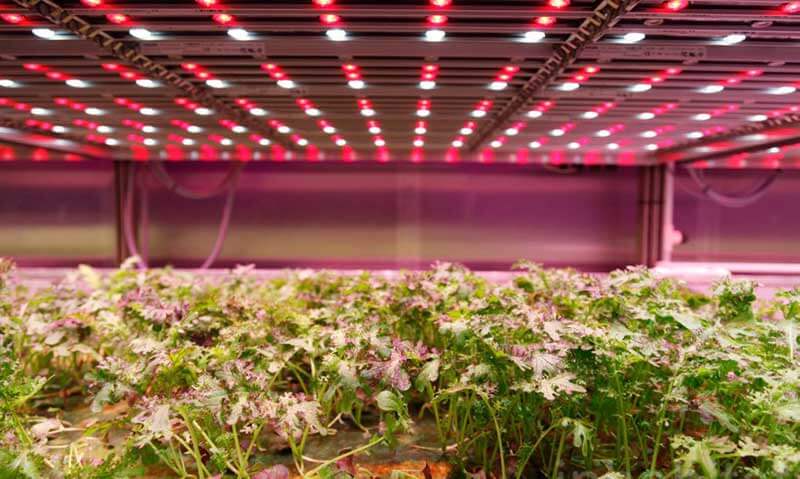- A Dutch vertical farm demonstrates 21st-century sustainable farming
- Plantscrapers: vertical robot farming meets urban architecture
- Turning concrete jungles into flourishing farms
The world is in crisis. Extreme weather such as droughts, floods, and persistent water and food shortages in developing countries have reached alarming levels. In 2016, as many as 108 million people were reported to be affected by food shortages, and the global population hasn’t yet reached the 10 billion projected by 2050. Clearly, this will only get worse over time – unless we do something. In fact, any delay in providing realistic solutions could result in catastrophe. Scientists and researchers have already rolled up their sleeves and started exploring our options, and by the looks of things, we might soon have a permanent solution to the chronic food shortages plaguing the world.
Urban areas are expanding, and they already host as much as 54 per cent of the global population. A UN report predicts that, by 2050, almost 66 per cent of people will live in cities, and if you factor in the population increase as well, that’s a huge trend toward urbanisation. When compared against the shortage of arable land, it’s obvious that we can no longer count on traditional food production to feed everyone. What’s more, on average, the agricultural sector consumes up to 70 per cent of all fresh water, and with water shortages already pressing vulnerable areas, the old way of producing food is simply too unsustainable. But thanks to various tech breakthroughs and agricultural innovations, instead of only seeing crops on farms, we’ll also see them in our urban centres.
A Dutch high-tech vertical farm demonstrates 21st-century sustainable farming
Vertical farming is the future. In its search for innovative solutions, the Netherlands is exploring this option, and it’ll soon become home to the first commercial vertical farm in Europe. Vertical farming, a method of indoor food production under strictly controlled conditions, could be the perfect method for producing pesticide-free, healthy, high-quality food. The Staay Food Group, a leading fresh fruit and vegetables company, has teamed up with Philips Lighting and vegetable producer Rijk Zwaan to push this tech forward. And what they’ve accomplished is nothing short of genius.

Their Dronten-based vertical farming research facility, GrowWise, is all high-tech. The farm is a prime example of how crops can be grown without sunlight or soil. If you think it’s impossible, here’s why you’re wrong. While traditional farming depends on weather conditions – the right amount of rain and sunlight – and is limited to short growing seasons in most parts of the world, that’s not the case here. They’re using hydroponic farming, which doesn’t require soil as the plants’ roots are immersed in nutrient-packed water. The crops they’re farming can be grown all year round – in far less space. By stacking beds like book shelves, one on top of another, these farms can pack a huge growing area into a small footprint. And high-tech LEDs can reproduce the same effect sunlight has on chlorophyll, serving as a catalyst for photosynthesis, through which the plants’ basic building materials – cellulose and glucose – are produced. And that’s not even the best thing. Plants seem to favour LEDs and are ready for harvesting in just 30 to 40 days, compared to the 60 to 65 days needed for crops to grow in a typical greenhouse, according to Gus van der Feltz, the global director of City Farming. Currently, the vertical farm is focused on lettuce production, but soon, we’ll be able to get fresh fruit and vegetables no matter the season.
Plantscrapers: vertical farming meets urban architecture
Plantagon, a Swedish food-tech company, has proposed that cities should escape from building traditional, single-purpose-only buildings and turn to constructing multipurpose buildings called plantscrapers. These towers consist of both offices and indoor farms, with a capacity to produce 500 metric tons of organic food per year. The home of the first such plantscraper is Linköping, Sweden. The company’s vision is clear – maximise food production using minimum space. “In a dense city environment access to land is extremely low and the price is extremely high,” the company emphasised, adding that “A viable solution for sustainable urban food production must produce the maximum volume of food on a minimum land area whilst using minimal resources and generating minimum waste”.
Called The World Food Building, the 60-metre-tall vertical farm will operate hydroponically, just like GrowWise. Everything from irrigation, to nutrition, to temperature, to sunlight will be controlled autonomously, ensuring maximum yield. Plantagon estimates that the vertical farm “could save 1,000 metric tons of carbon dioxide emissions and 50 million litres of water” in comparison to traditional farming practices. And to top it off, Plantagon developed the Foodwall, a vertical growing system that can be installed in urban homes. It’s estimated “that if one home out of 10 in a city added a Foodwall, it could save 235 million tonnes of carbon dioxide emissions”. So we’ll be able to both feed the population sustainably and reduce our harmful impact on the environment – and that’s exactly what we need!
Turning concrete jungles into flourishing farms
The agricultural sector is slowly abandoning traditional practices, as water and land scarcity dictate a different approach. Breakthroughs and tech innovations make it easier for forward-thinking food companies to adapt to the demand for fresh food in large urban areas, turning dull office complexes into multipurpose sustainable buildings with vertical farms. And we expect more cities to embrace the same approach in the following years.
Share via:


